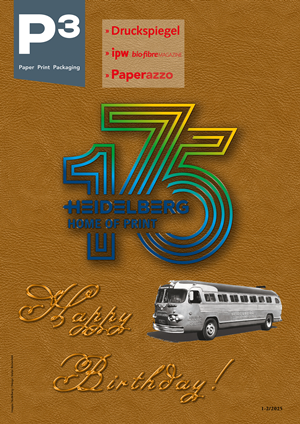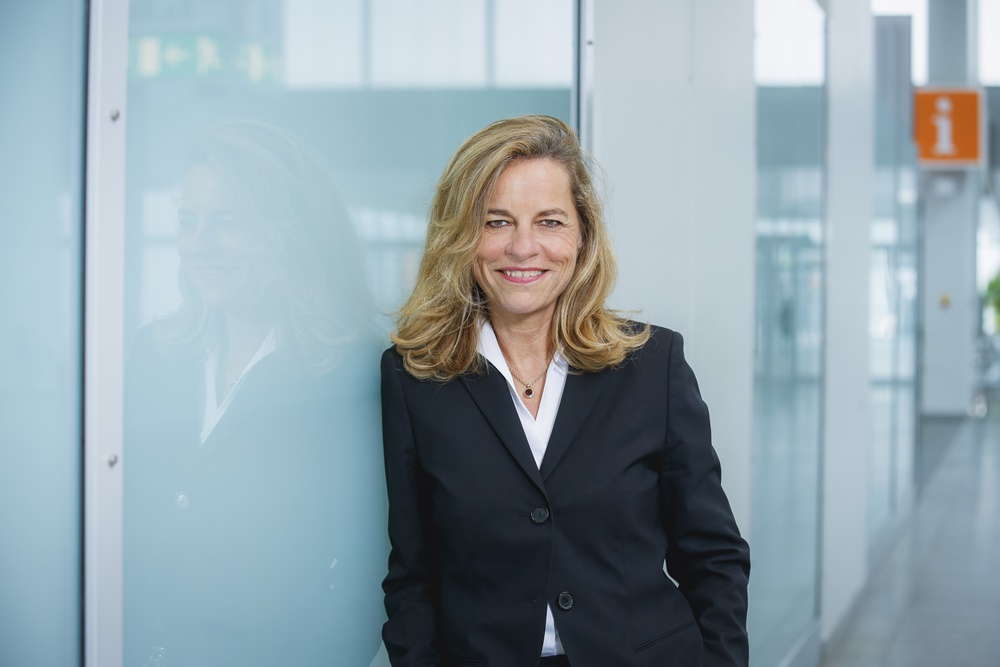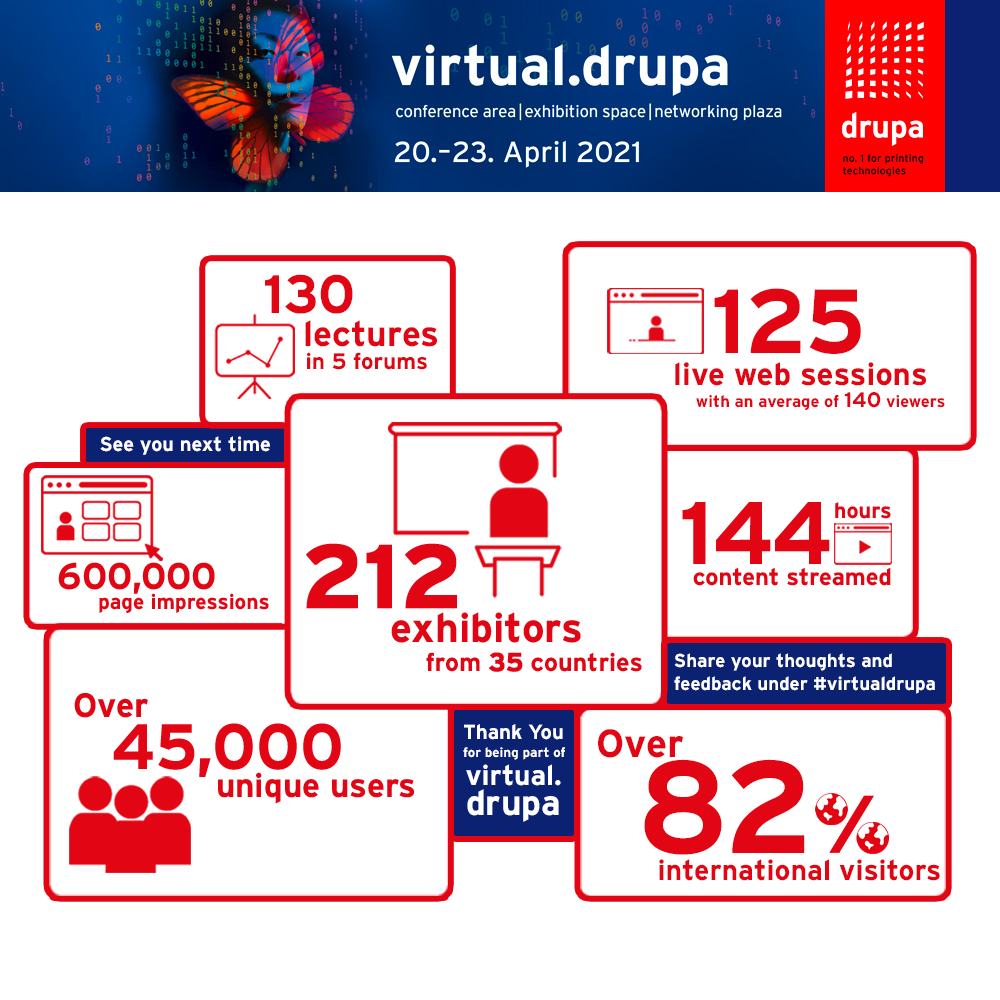P3 3-4/2021 en
Interview
Review: virtual.drupa 2021
Events
At the end of April, Messe Düsseldorf was extremely satisfied with the course and acceptance of the just finished virtual.drupa, which was designed to act as a bridge until the next face-to-face trade fair in 2024. We spoke to Sabine Geldermann, Director drupa and Global Head Print Technologies at Messe Düsseldorf, about her conclusion, the sustainability of the platforms created and her expectations for the next, “real” drupa.
Sabine Geldermann, Director drupa and Global Head Print Technologies, Messe Düsseldorf.
Ms. Geldermann, on the final day of virtual.drupa there was a press release from Messe Düsseldorf with figures on the event. In particular, the high level of response was highlighted. What is your conclusion?
Sabine Geldermann: Absolutely positive! This year presented us all with new challenges. We have managed to transfer a leading global trade fair like drupa from a face-to-face event to a virtual one. With its three pillars “Exhibition Space”, “Conference Area” and “Networking Plaza”, virtual.drupa was an important milestone on the way to interacting with the global community again in 2024 and gave exhibitors and visitors the opportunity to gain new leads, reactivate business and network. It has ensured an indispensable transfer of knowledge that is based on the needs and current topics of the industry. Our positive balance is also underpinned by impressive KPIs. Almost all global players were on board among the 212 exhibitors. Our concept also worked out on the visitor side: 20,500 registered visitors, 45,000 unique users and 600,000 page views in 4 days are remarkable, plus the lively participation in the exhibitor web sessions and the streams in the conference area. I was particularly pleased with the 82 percent internationality of the visitors. The drupa community networked and exchanged ideas virtually from 155 countries across all borders and time zones.
The technical effort for programming, the provision of the various platforms, streaming, databases and performance is certainly high in this dimension and required considerable investments in advance. How should the IT infrastructure created for virtual.drupa continue to be used?
S.G.: Sustainability is an important principle in all of our investments. It is not our aim to develop “quick fixes” or short-lived events. For virtual.drupa, for example, we built on existing digital modules and processes and expanded innovative components and functions where necessary. We will also use these for future online events and hybrid trade fairs. In order to get the most out of the event and indispensable added value for our customers, we have decided to make the virtual.drupa portal available to the global print and packaging community until the end of the year - still free of charge for everyone, just one registration required. This means that all functions and features such as the exhibitor showrooms can continue to be used and that our excellent video library with all recorded streams will be available free of charge until then. We would definitely like to recommend this impressive pool of knowledge to the industry as still highly relevant and inspiring content. We are also planning a virtual conference day in autumn with top-class speakers and relevant topics from the industry. As Messe Düsseldorf, we will of course also use the expanded infrastructure and the experience we have gained for other trade fairs and projects, build on it and supplement and optimize it where necessary. We cannot and do not want to turn back the digital wheel, because the entire trade fair landscape is changing towards hybrid formats. We are challenged to continue to offer our customers and visitors the best possible service and to meet customer expectations.
Can the implementation of virtual events be a profitable business model for an organizer of face-to-face trade fairs?
S.G.: That certainly depends on the respective requirements. Nonetheless, it has been an investment in a high quality platform in the first place with the aim of providing the industry with knowledge transfer and business reactivation. Based on the feedback from our customers around the world, we succeeded in doing this very well. But in the long term, we see pure online formats more as a supplement to existing offers, or - as is now the case in pandemic times - as a necessary bridge until a face-to-face event is possible again. We believe that the future of trade shows is a hybrid one that combines the best of both worlds. Our exhibitor and visitor feedback shows us that digital trade fairs are by no means a substitute for the analog customer experience. Studies confirm this very impressively. The elimination of physical meetings and chance encounters is a massive cut in the sales process. That is why we want to use our now established digital infrastructure primarily for hybrid trade fair formats in the future and extend the “real” trade fair on the Internet in a sustainable manner, both spatially and in terms of time.
How do you rate the sustainability efforts of the exhibitors and the industry in general? With this format, did you have an insight into the exhibition that could be compared to a “real” drupa?
S.G.: Issues such as sustainability and the circular economy were already playing a significant role in the industry before the pandemic, and this was reinforced by the impact of the pandemic. Most companies are now aware that sustainable management and environmental protection are not only relevant and compellingly compatible with corporate culture and responsibility (CSR), but also represent a real competitive advantage. At virtual.drupa, the topic of circular economy was therefore the focus of the conference area alongside artificial intelligence, connected consumer and platform economy. My highlight - and at the same time an important appeal - was the keynote by the journalist and author Dr. Gabrielle Walker on “All change: Implications of the climate megatrend for the printing industry”. As for the second part of your question, it is obviously difficult to compare the two formats directly. A lot of things happen more spontaneously and unplanned at a face-to-face event - a chance encounter here, an exciting discovery there. Another convincing USP of drupa are running machines on the premises and the opportunity for potential customers to experience capital goods with all their senses. This is exactly where digital formats reach their limits. The online format, on the other hand, offers the flexibility to watch targeted streams, live web sessions, webinars and exhibitors across all time zones 24/7 and, in some cases, to delve deeper into topics than would have been possible in normal, hectic presence at the trade fair. It also offers the option of viewing content retrospectively. For me, this is a clear advantage of the digital trade fair experience, which also provides very valuable impulses on demand after the event.
What are you most looking forward to at drupa 2024?
S.G.: Since it was founded 70 years ago, drupa has stood for a unique and very special atmosphere. It has always been a place for inspiration and innovation. The international community is currently looking forward to a certain digital fatigue to see each other face to face in Düsseldorf in 2024. For drupa 2024, I hope that this will be possible again and that the global drupa community will meet up with colleagues and business partners in the evening to network for a glass of Altbier under safe conditions and after intensive days at the trade fair.
Ms. Geldermann, thank you for talking to us!








